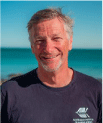Concurrent 15. Presentation for: Impacts of exposure to a seismic source survey on silverlip pearl oysters (Pinctada maxima)
Mark G. Meekan A *A Australian Institute of Marine Science, Indian Ocean Marine Research Centre, Level 3, The University of Western Australia, Fairway, Crawley, WA 6009, Australia.
The APPEA Journal 62 - https://doi.org/10.1071/AJ21354
Published: 3 June 2022
Abstract
Presented on Wednesday 18 May: Session 15
Between 2018 and 2021, AIMS and its partners conducted a large-scale experiment to investigate the effect of exposure to a 3D seismic survey on pearl oysters. In August 2018, ≈11 000 adult wild silverlip pearl oysters (Pinctada maxima) were collected and attached to bottom culture lines to acclimatise for 1 month at a holding lease site, 40 km off Broome, WA. These oysters were split across rows configured parallel to each other at seven horizontal distances up to 6000 m from a ‘zero line’. In September 2018, we sailed a commercial seismic vessel along one 20 km-long inactive (vessel control) sail line along the zero line, followed by six operational (exposure) sail lines, at increasing distances from the zero line, with each line separated in time by either 12 or 24 h. This design resulted in groups of pearl oysters with 35 different exposure histories (seven distances, five exposure distances) that were then transferred to undergo either lethal biophysical sampling or pearl seeding for a ‘grow-out’ study of pearl production. Biophysical sampling included immunology tests, primarily using flow cytometry and gene expression changes in nacre- and stress-associated genes. Audits of oyster growth and condition were conducted at various time points between the exposure period and harvesting of the seeded oysters. The number and quality of pearls produced by each exposure group was assessed 2 years after exposure (December 2020). The results of these analyses are being finalised for presentation.
To access the presentation click the link on the right. To read the full paper click here
Keywords: anthropogenic impacts, impulsive, invertebrates, marine noise, mortality, pearl oysters, pearl production, seismic source exposure.

Dr Mark Meekan is a Senior Principal Research Scientist at the Australian Institute of Marine Science based in Perth, Western Australia. He is a fish ecologist with interests ranging from the early life history of reef fishes to the ecosystem role and function of elasmobranchs. Mark has published over 200 papers in international journals and he currently supervises post-doctoral fellows and PhD students on working shark and reef fish projects throughout the Indian and Pacific oceans. |


